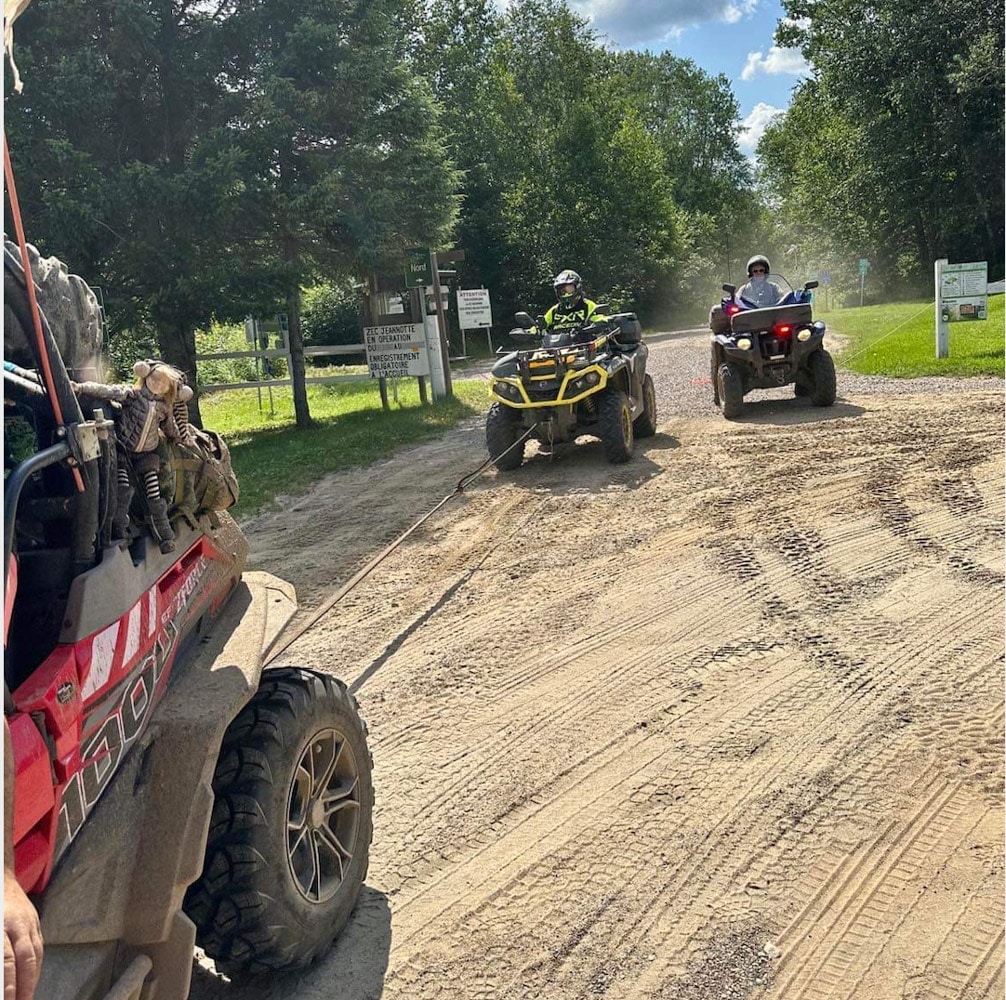Julie, our son and I are planning an afternoon ride. We’ll leave from Saint-Damien-de-Buckland and have dinner in Saint-Paul-de-Montminy. Afterwards, we’ll visit the giant, realistic Halloween ornaments at Marc Malenfant’s, a place known for its Halloween decorations. However, this Sunday family outing was seasoned with heat flushes!
During the ride, we took a break on the banks of the Des Mornes river in Massif du Sud park. We then climb a rocky hill. As we climb, the ATV begins to smell of a sweet odor that is characteristic of “prestone”. I start to wonder, but continue anyway. Once on the forest road, an alarm sounds and a red light comes on the dashboard. 2 fateful words are displayed: engine overheating.
I immediately stop the engine and start diagnosing the problem.
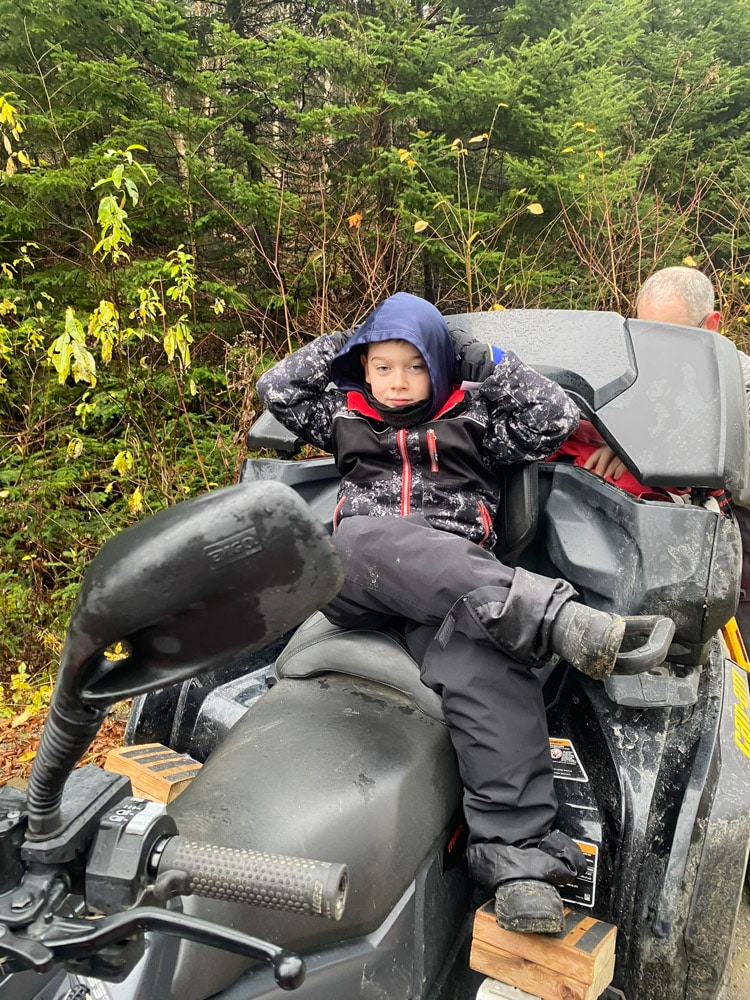
Our son chilling out during diagnosis.
How the cooling system works
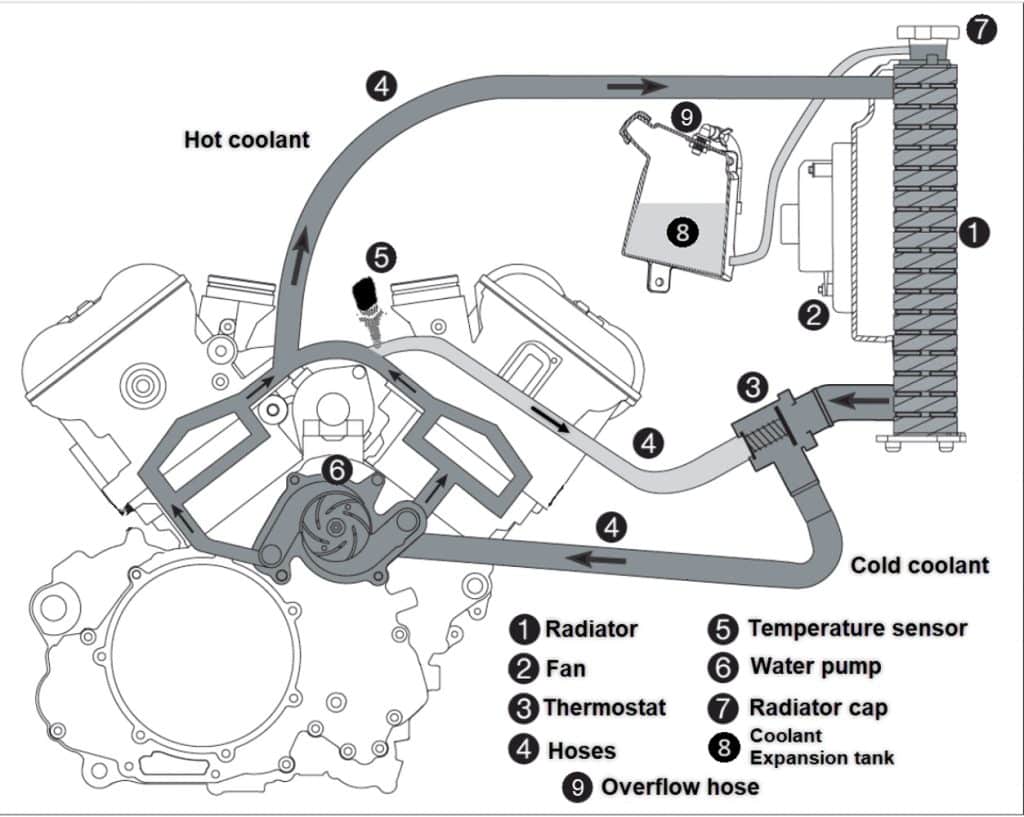
Sketch of the cooling system
First, here’s how the cooling system works. There are nine main components in all.
- The radiator: this cools the coolant thanks to the air flow created by the vehicle’s motion. Heat is exchanged when the liquid passes through the horizontal lines and the fins between them. Hence the importance of not blocking the front of the radiator.
- The fan: when the natural air flow is insufficient, the fan starts to increase the air flow to cool the liquid more quickly. This usually occurs when the vehicle is travelling at low speed and/or under stress and/or when the outside temperature is high.
- Thermostat: controls the flow of coolant to the radiator. When the ATV is off or cold, the thermostat is closed.
- Hoses: pipes that allow coolant to circulate between the radiator and the engine. When the thermostat is closed, especially when the engine is cold, the liquid circulates in circles in the engine only. It does not go to the radiator.
- Temperature sensor: controls fan start/stop. It also warns the driver when the temperature is too high.
- Water pump: circulates coolant.
- Radiator cap: in addition to sealing the system, it controls pressure. If the pressure becomes too high, usually caused by overheating, it is vented through an overflow pipe. Excluding system leaks, this is the main cause of “prestone” odors. On some models, the pressure control plug is on the radiator, on others on the expansion tank.
- Expansion/filling tank: the place where you fill it with coolant. It also holds the coolant overflow when it’s hot. The hotter it is, the more it expands. If there’s too much coolant, it will come out through the overflow pipe (9).
- Coolant: commonly known as “prestone” or antifreeze. It’s mixed with water, usually in a 50/50 ratio. Water is the most effective element for cooling, but has the drawback of freezing below 0 degrees C and boiling above 100 degrees C. It also contains no anti-corrosion additives. By mixing it with Preston, these shortcomings disappear for our use.
Diagnosing the problem
When the ATV overheated, I noticed that the fan wasn’t turning, because I couldn’t hear it. There are three possible causes: blown fuse, defective fan motor or defective temperature sensor. I always carry with me a wire that gets around the fuse and temperature sensor problem. This wire allows the fan to be connected directly to the 12-volt socket. However, when I took it out of my trunk, I noticed that it was damaged. It had come out of its packaging on its own and had wandered all over the trunk. Even the fuse for the 12-volt socket is broken.
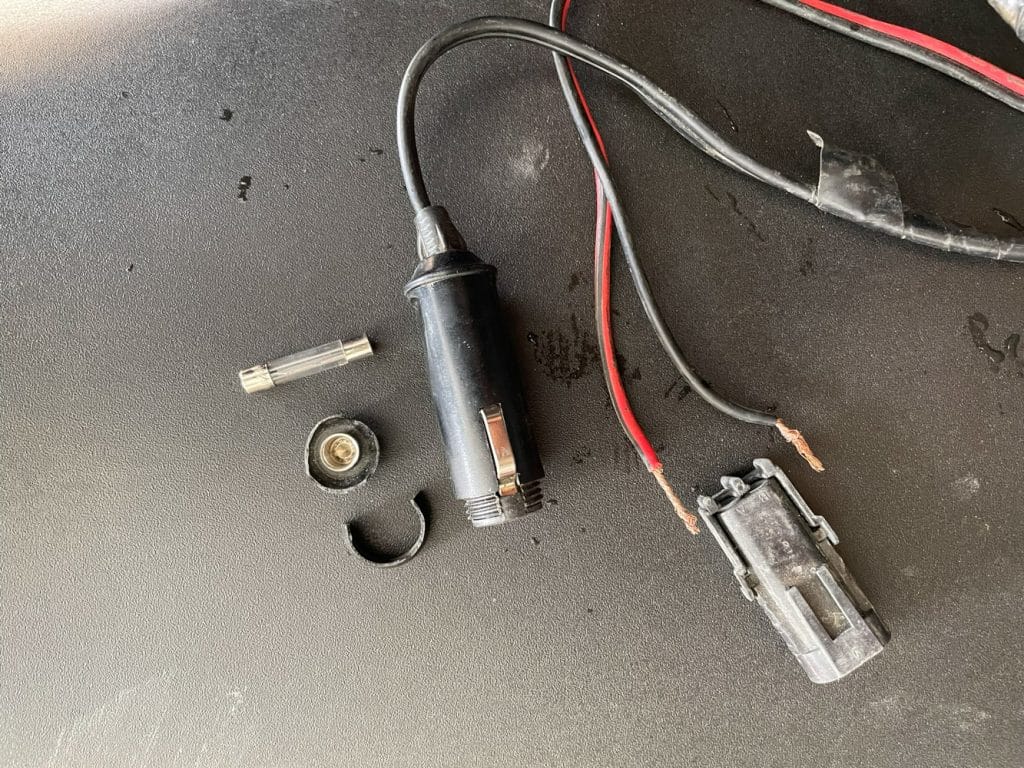
Bypass wire already broken
I have spare fuses, but not of this capacity. So I decide to improvise a fuse with a wire bent 5-6 times. It seems unwise, but there’s already a fuse protecting the cigarette-lighter socket. I attach the 12-volt plug with black electrical tape.
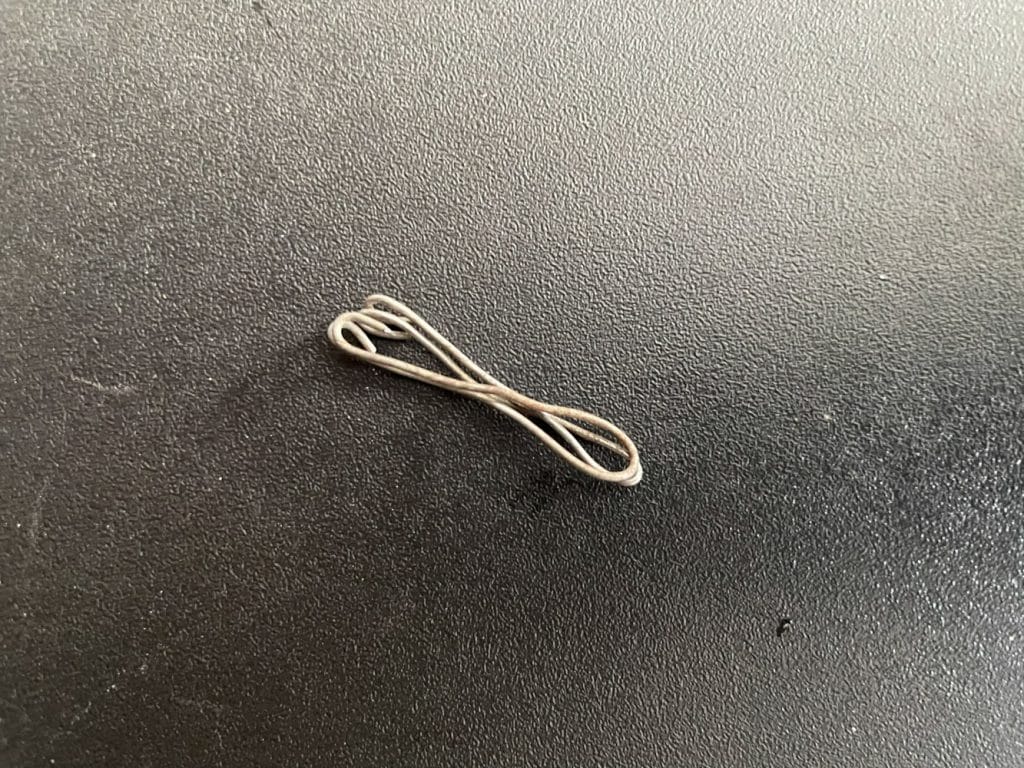
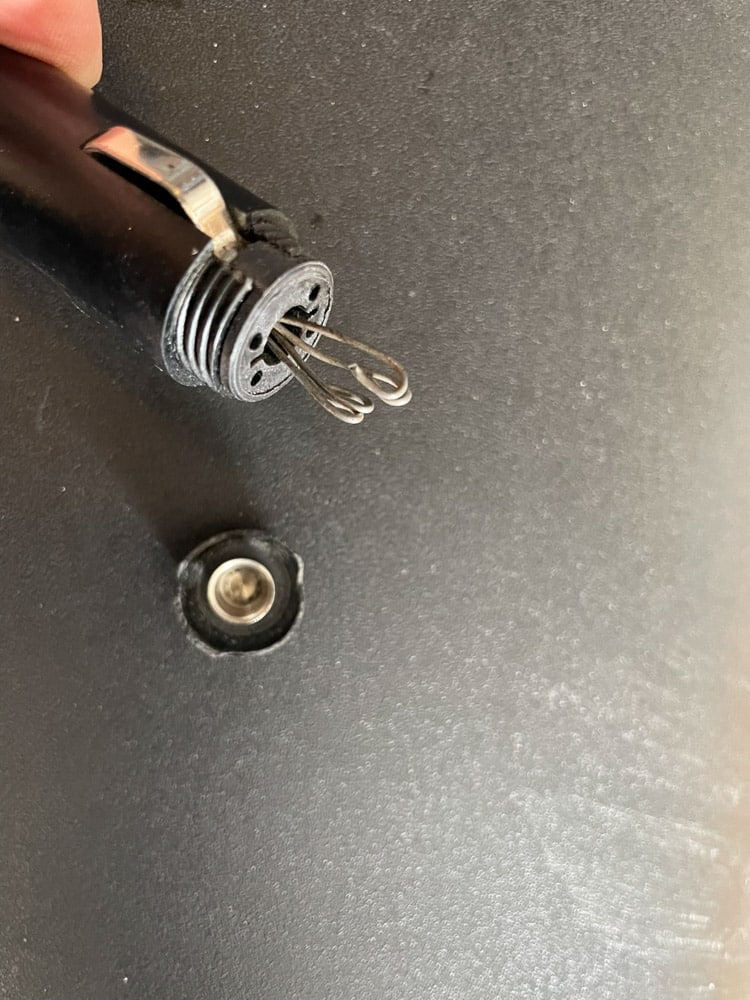
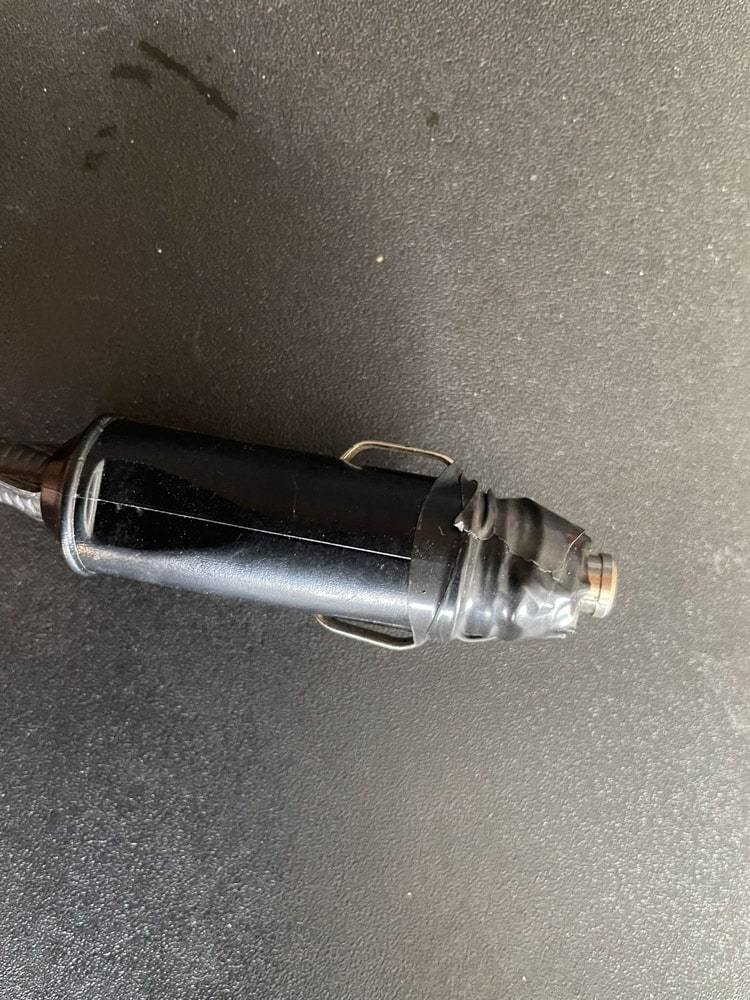
Bush mechanics – how to manage engine overheating
Despite the absence of the connector, I plug the 2 wires directly into the fan socket.
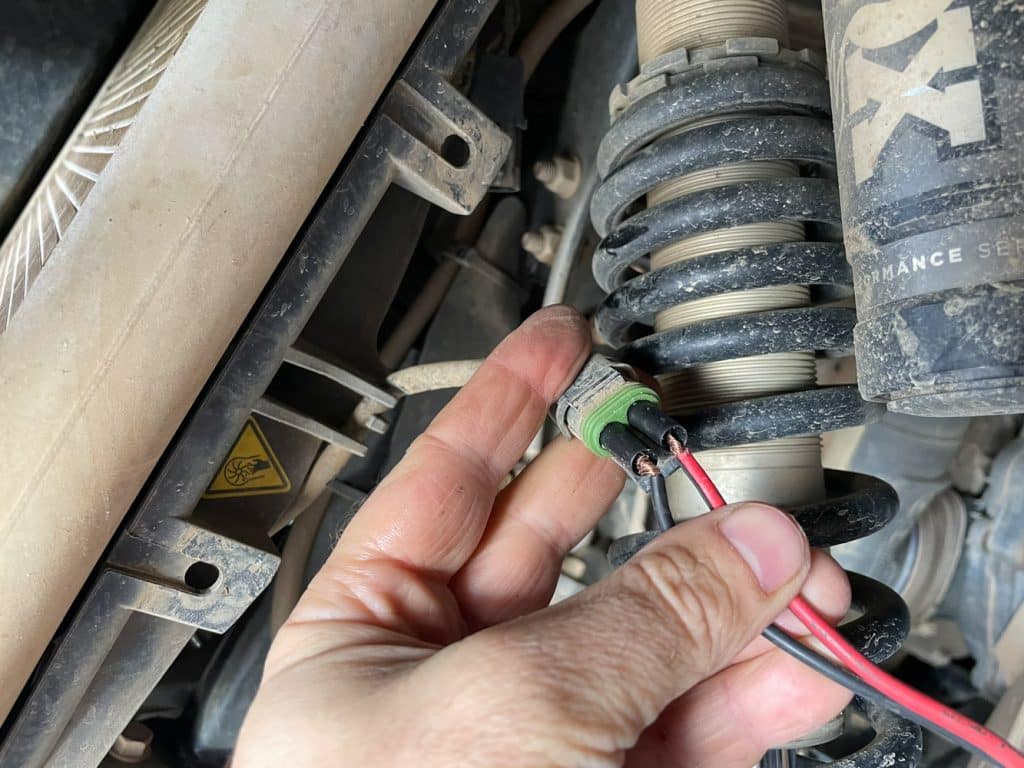
Attempting to connect to the fan wire
Then I plugged the whole thing into the ATV’s 12v socket and… nothing. Is it the spare wire that’s faulty? I wanted to test it by touching the 2 tips on my tongue, but my girlfriend’s strongly disapproving look told me this wasn’t a good idea. Instead, I touch the air compressor contacts and it works. In conclusion, it’s the fan motor that’s died.
Proceed with caution
I wait for the engine to cool down before opening the radiator cap. Indeed, it’s not at all advisable to open it while it’s very hot. There’s a lot of pressure in the system, and it can shoot high into the air and burn you badly. It is strongly recommended to open the radiator cap slowly and halfway to limit damage. Once the engine is cool enough and the cap removed, I add water to the tank to compensate for the loss of antifreeze. The amount of water added indicates that about 1 liter of coolant has gone out through the overflow pipe.
Next, I configure the ATV’s dashboard to display the engine temperature. Indeed, for the model I own, CAN-AM Outlander 850 MAX XTP 2022, the alarm sounds when the temperature reaches or exceeds 115 degrees Celsius. So, on the way back to my power plant, I constantly monitor the engine temperature to make sure it doesn’t exceed 95 degrees Celsius. It’s at this temperature that the fan starts up. Forest roads and rows are preferred, as they allow a high cadence to ensure good air flow to cool the engine.

Engine temperature display
Other possible causes of overheating
Here are the other causes of overheating, from the most common to the least common in my experience. Also, some suggestions for temporary repairs to get back to the parking lot or to the next road-accessible destination:
- Clogged radiator: It’s difficult for air to pass between the radiator fins. Ideally, you should clean the radiator every time you return from a ride. Otherwise, as a last resort, plunge the front of the ATV into a body of water and splash the radiator with your hands. Note that this is illegal in a body of water, and you run the risk of being fined. On the other hand, if you’re alone and this is the only way to get home safely, then it’s a matter of survival.
- Faulty temperature sensor: Plug the radiator fan directly into the 12-volt socket.
- Fluid still leaking from overflow pipe: When engine temperature is normal and the fan is running, it’s probably the radiator cap that’s no longer holding the pressure (worn spring). If there’s an overheating alarm and the fan is running and the radiator is clean, it’s probably the water pump or thermostat that’s no longer working. The best way to check is to touch the hose at the bottom of the radiator. If it’s relatively warm or even cold, the antifreeze isn’t circulating.
- Faulty thermostat: coolant no longer circulates. Wait for the engine to cool down and, if possible, remove the thermostat from its compartment. Add coolant or clean water if necessary.
- Coolant leak: where possible, plug the hole and add coolant or clean water to enable you to return to the parking area.
- Faulty water pump: this cannot be repaired on the trail, as the engine usually has to be opened to repair it. Towing is essential.
Guide tips
As a tour guide, the most common cause of overheating on guided tours is a clogged radiator. The trick is to bring along a manual boat bilge pump or one with a 12-volt plug. A liquid transfer siphon pump with a bulb can also do the job. All you have to do is find a clean body of water and hose down the radiator to clean it.
Personally, I prefer the one with a 12-volt plug, as it allows a good distance between the off-road vehicle and the body of water. Plus, it’s more compact. A manual pump will require the shortest possible outlet hose, so you don’t have to pump for long and you get a good jet of water. The pump is modified to fit a smaller hose for easier transport. A threaded connector is fixed in the water outlet with two-component epoxy putty.
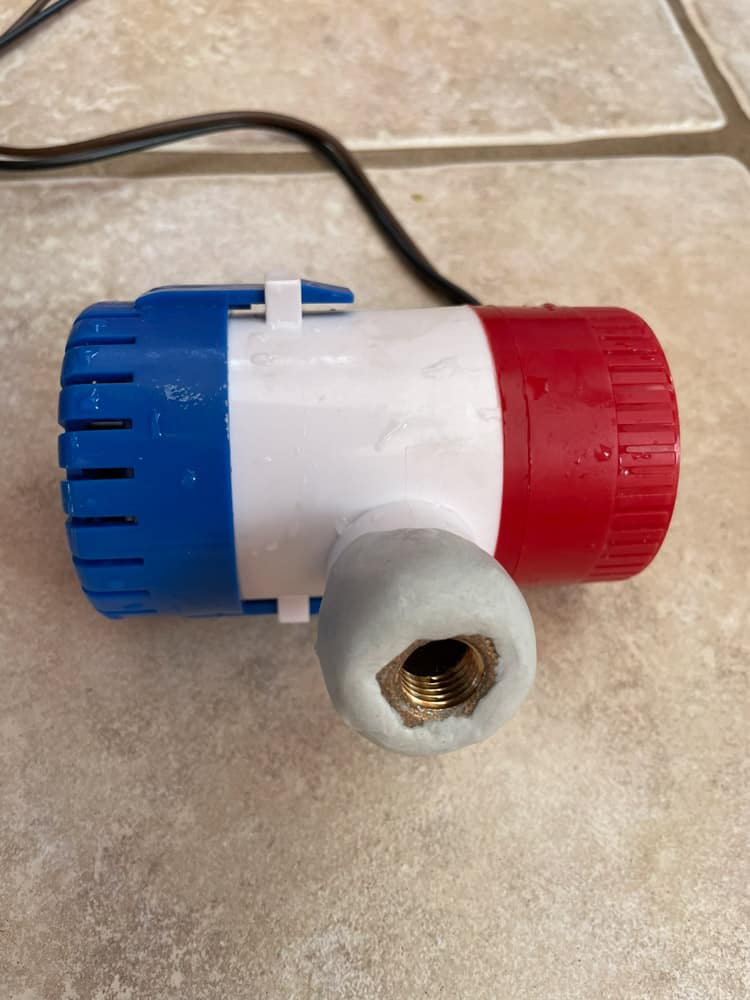
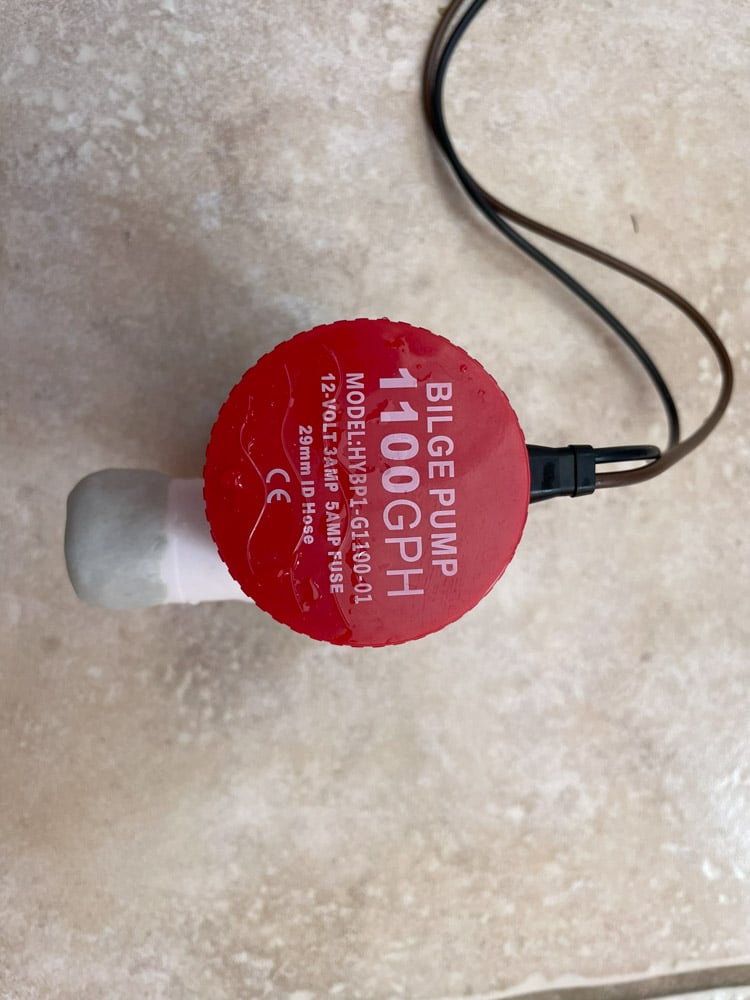
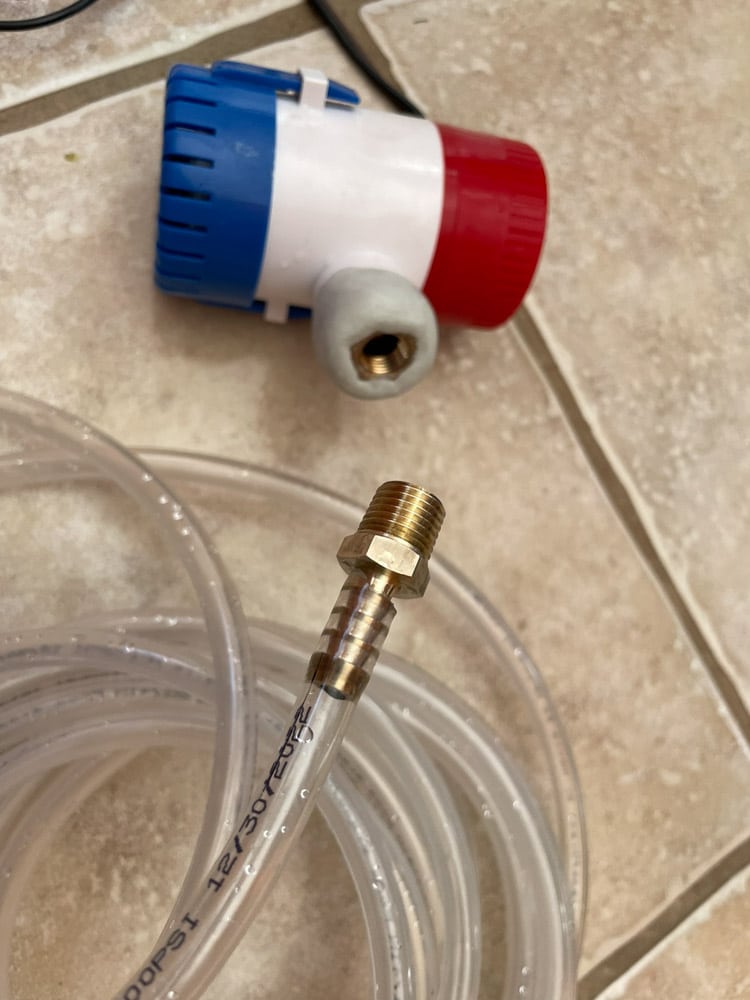
Bush mechanics – how to manage engine overheating – Pump for boat dock
A 20-foot wire is added to supply 12 volts, and there’s also a 20-foot hose with a connector so it can be screwed to the pump.
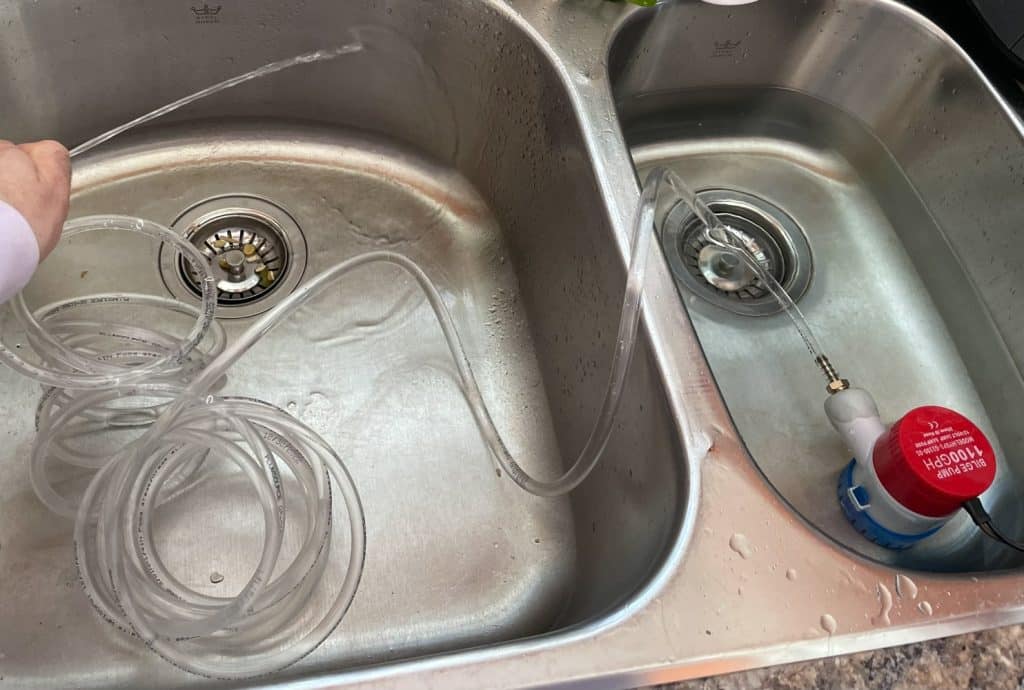
Pump in action!
Conclusion
We returned to the parking lot with the ATV’s engine running without any problems. The ATV’s temperature didn’t rise above 87C on the way back. Since we’d gone out of our way to see the Halloween decorations, we might as well go all the way! We took the truck to St-Paul-de-Montminy, had supper there and went for a visit. It was well worth it:


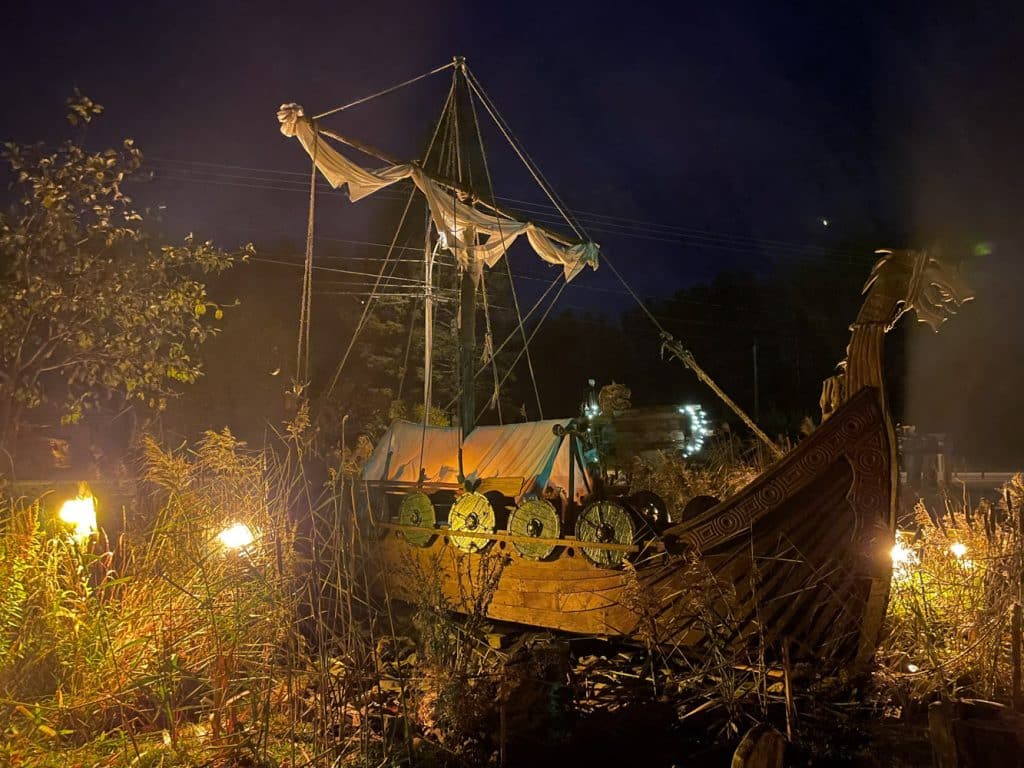
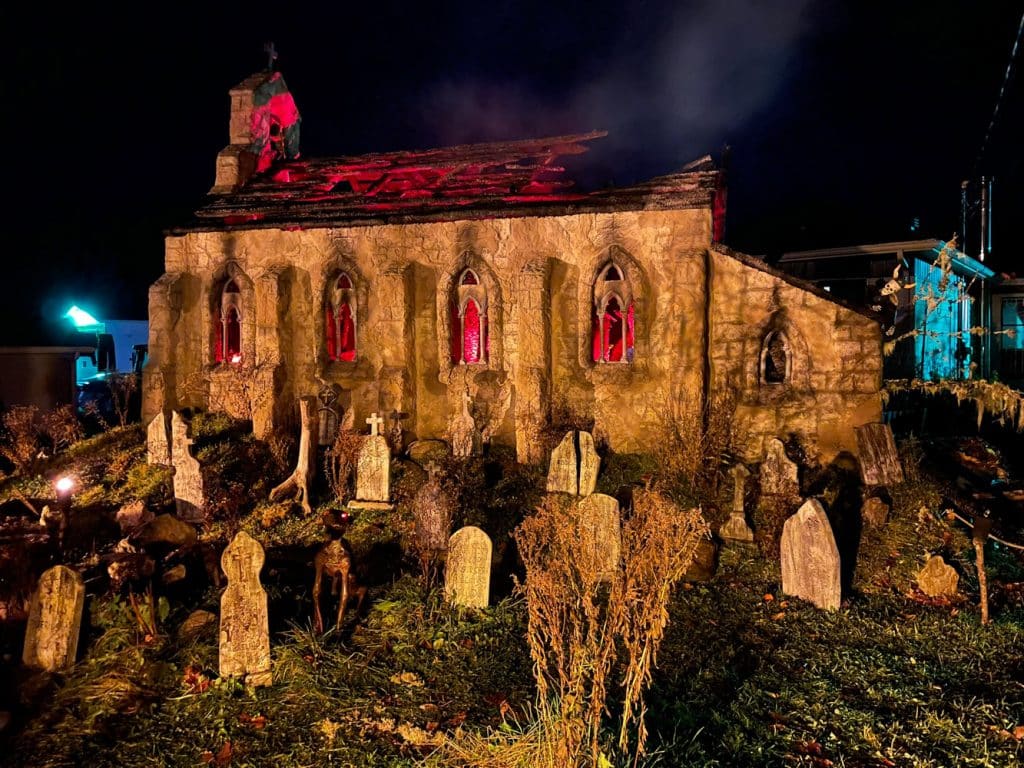
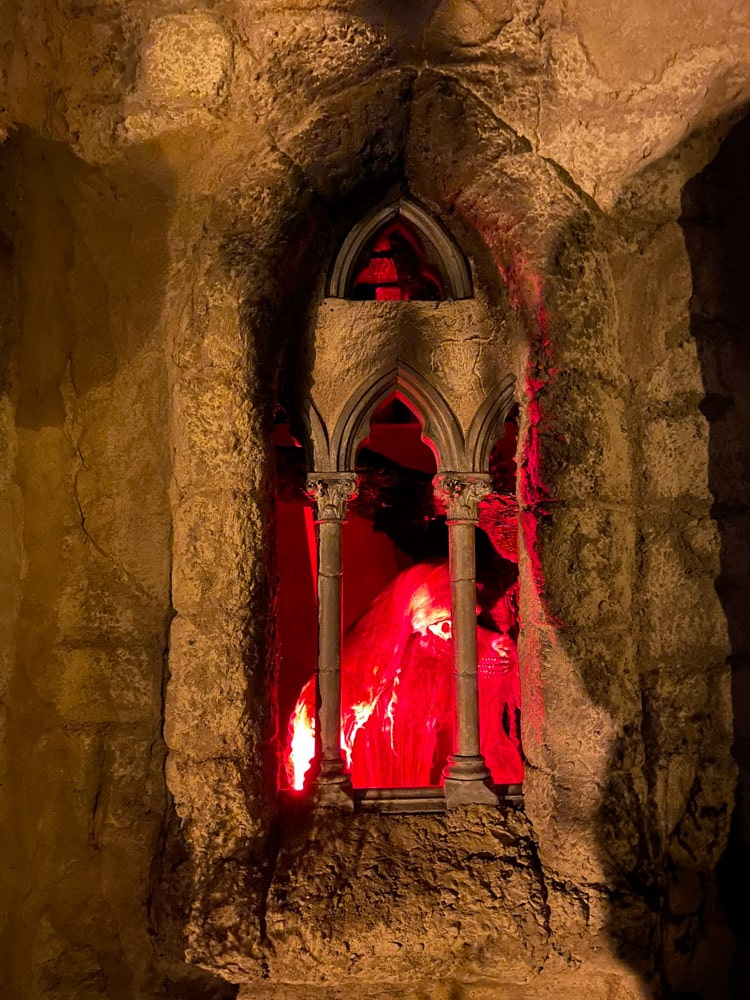
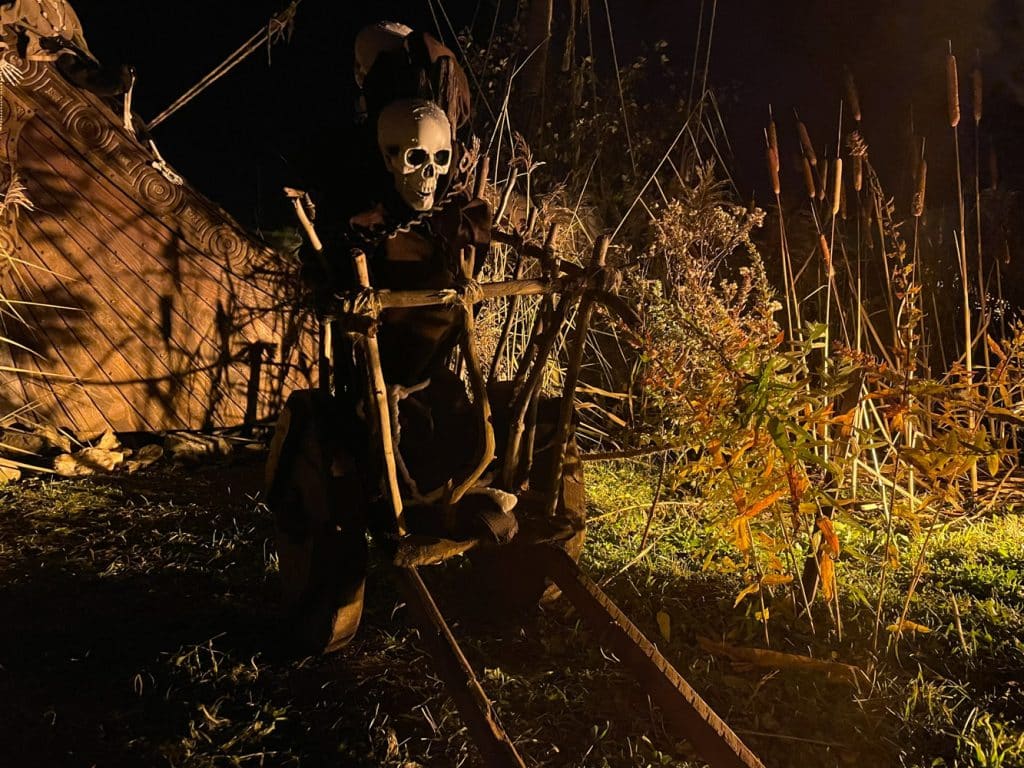
Halloween decorations at Mr. Marc Malenfant’s home in Saint-Paul-de-Montminy.


